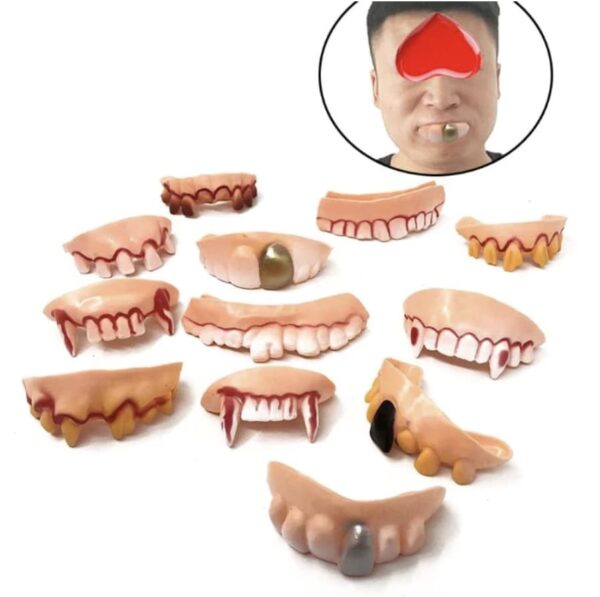What Causes Hole Tooth Worm? Fix It Fast

Tooth decay, often referred to as a “hole” in the tooth, is a condition that affects the structure of the teeth, leading to cavities. The causative agent commonly known as the “tooth worm” is not actually a worm, but rather the result of bacterial action on the tooth enamel. This misconception originates from ancient beliefs that a worm was responsible for tooth decay. However, the reality is that tooth decay is caused by the acid produced by bacteria in the mouth when they break down food, particularly sugars and starches.
The process begins with the bacteria in the mouth feeding on carbohydrates, producing acid as a byproduct. This acid dissolves the minerals in the tooth enamel, creating a weak spot that can eventually become a cavity. If left untreated, the decay can progress through the enamel and into the dentin, a softer layer of the tooth, and potentially reach the pulp, causing pain and potentially leading to infection.
Several factors contribute to tooth decay, including poor oral hygiene, diet high in sugars and acids, lack of fluoride, and certain medical conditions. Regular brushing and flossing can remove plaque, the biofilm of bacteria, from the teeth, preventing the initial stages of tooth decay. A diet that limits sugary and acidic foods and drinks can also help. Fluoride, found in toothpaste and community water supplies, helps strengthen tooth enamel, making it more resistant to acid attacks.
To fix tooth decay fast, it’s essential to visit a dentist as soon as possible. The dentist can assess the extent of the decay and provide the appropriate treatment, which may include fillings for small cavities or more extensive procedures like crowns or root canals for advanced decay. Preventive measures such as regular dental check-ups, good oral hygiene practices, and a healthy diet can significantly reduce the risk of developing tooth decay.
In terms of immediate relief for toothache caused by decay, over-the-counter pain relievers like acetaminophen or ibuprofen can help manage the pain until a dental appointment can be scheduled. However, these are temporary measures and not a substitute for professional dental care. In some cases, a temporary filling or desensitizing toothpaste may be recommended by a dentist for emergency relief.
Understanding the true cause of tooth decay and taking proactive steps towards prevention and early treatment can significantly improve oral health, avoiding the misconception of the “tooth worm” and addressing the real issue at hand—bacterial action and acid production.
Common Myths About Tooth Decay
Myth: Sugar is the only cause of tooth decay. Reality: While sugars are a primary source of energy for the bacteria that cause tooth decay, starches and other carbohydrates can also contribute to the problem.
Myth: Children are more susceptible to tooth decay than adults. Reality: While it’s true that children’s teeth are more prone to decay due to poorer oral hygiene and dietary habits, adults can also develop tooth decay, especially as they age and gums recede, exposing more of the tooth surface to potential decay.
Myth: Tooth decay is irreversible. Reality: Early stages of tooth decay can be reversed with fluoride treatment and improved oral hygiene. However, once a cavity forms, it requires a dental filling or other restorative treatment.
Future Trends in Tooth Decay Prevention
Advancements in dental materials and technologies are continually evolving, offering new and more effective ways to prevent and treat tooth decay. For instance, nanotechnology is being explored for its potential to create toothpaste and other oral care products that can more effectively prevent decay and even reverse early stages of the disease.
Moreover, research into the microbiome of the mouth is providing insights into how to promote a healthy balance of bacteria, potentially reducing the risk of decay. Dietary approaches, including the use of probiotics and certain nutrients that support oral health, are also areas of active study.
A Step-by-Step Guide to Preventing Tooth Decay
- Practice Good Oral Hygiene: Brush your teeth at least twice a day with a fluoride toothpaste and clean between your teeth once a day.
- Limit Sugary and Acidic Foods: Reduce your consumption of sugars and starches, which are primary food sources for decay-causing bacteria.
- Use Fluoride: In addition to fluoride toothpaste, consider using a fluoride mouthwash for extra protection.
- Visit Your Dentist Regularly: Regular dental check-ups can help identify and treat tooth decay in its early stages.
- Consider Sealants: Dental sealants can provide an extra layer of protection against decay, especially for children and teenagers.
What is the main cause of tooth decay?
+The main cause of tooth decay is the acid produced by bacteria in the mouth when they break down food, particularly sugars and starches.
How can tooth decay be prevented?
+Tooth decay can be prevented through good oral hygiene practices, including regular brushing and flossing, limiting sugary and acidic foods, using fluoride products, and visiting the dentist regularly.
What happens if tooth decay is left untreated?
+If left untreated, tooth decay can progress through the enamel and into the dentin, potentially reaching the pulp and causing pain and infection.
In conclusion, understanding the true nature of tooth decay and adopting a proactive approach to oral health can significantly reduce the risk of developing cavities. By debunking myths and embracing evidence-based practices, individuals can protect their teeth and maintain a healthy, beautiful smile for years to come.

